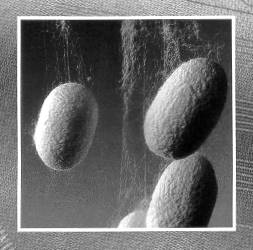Ghosts, Demons and Immortals
/ I hope you all had a lovely Halloween, hah, hah, haaa!
I hope you all had a lovely Halloween, hah, hah, haaa!There are five basic types of human death; either we become a god, a ghost, a demon, an immortal, or a supportive ancestor.
Most people die and are forgotten, even their descendants forget them in a generation or so. Most people are mostly forgotten in seven years. People who die young, or die with a lot of unfulfilled potential may linger a bit longer. People who lived long fulfilling lives are generally remembered by their descendants simply as supportive ancestors, the more time that passes, the more generally we feel their support. I don't know how my deceased grandparents would feel about me writing a blog, they didn't live to see the internet, but they loved books and innovation, so I feel fairly sure that they would be regular readers if they were still alive.
But it is also safe to say that my grandparents are not completely resolved. I still wonder what they would think, and thus they live on through me and the many other people that knew them.
All ghosts, gods, demons, and supportive ancestors eventually become immortals--they become one with Dao-- they become undifferentiated from the totality of everything known and unknown. The Hindu God Shiva is one of the oldest gods, but eventually he too will be forgotten.
As you may have gathered, Daoism has a vast cosmology which is capable of incorporating new material, new world views, and also subsuming older cults, and mythologies. One of the "cults within the cult" is the quest for Immortality, called Xian in Chinese.
 The cult of Xian is extremely diverse. While there are some general suggestions about how to go about becoming a Xian, even manuals and programs to follow, there really is no method that works every time. Even though there are routes by which one may become a xian, like "Rising up in broad daylight with one's dogs and chickens," every process of becoming Xian is truly unique for that person, time and place.
The cult of Xian is extremely diverse. While there are some general suggestions about how to go about becoming a Xian, even manuals and programs to follow, there really is no method that works every time. Even though there are routes by which one may become a xian, like "Rising up in broad daylight with one's dogs and chickens," every process of becoming Xian is truly unique for that person, time and place.One thing I can say however, is that to become a xian, one must leave behind no unresolved entanglements, no lingering or unfulfilled commitments. An Immortal in that sense is the opposite of a ghost.
Going a little deeper into the subject, it is possible to be still alive and to have begun taking on a ghostly presence. Poor diet, drugs and aggressive behavior, all lead to what we call in Chinese Medicine, "deficiency." Deficiency, as a key concept in Chinese Medicine, takes many different forms, for instance it effects each organ differently and may only be noticed in one organ. From a Daoist point of view, "deficiency" is a draw for ghosts to feed and eventually take up residence in one's body. Ghosts if you remember, are weak commitments; commitments too "deficient" to follow through.
Thus we have one of the most basic connections between Chinese Medicine and Daoism. But don't think I'm letting you gongfu people off the hook. Gongfu, at its most basic level, is about establishing strong commitments. In Chinese Medicine the most potent way to "tonify" (the opposite of deficiency) the spleen and kidneys is through routine exercise. Health in this sense, completes the incomplete, it transforms ghosts into immortals.

 I want to announce that we have officially entered the Era of Conditioning.
I want to announce that we have officially entered the Era of Conditioning. I'm anti-conditioning. I believe in doing things form the inside out. If I said, "I believe in beginning from the heart," you could accuse me of being a silly romantic. But it's not because I want to bring out genius, or preserve mystery, I just prefer spontaneous unconditioned responses.
I'm anti-conditioning. I believe in doing things form the inside out. If I said, "I believe in beginning from the heart," you could accuse me of being a silly romantic. But it's not because I want to bring out genius, or preserve mystery, I just prefer spontaneous unconditioned responses.

 way I do, than you also understand that it is not referring to a remedy. It is an engaged process of complete embodiment. My regular readers will recognize this statement as being in tune with a world view that encouraged long-life, slow motion, continuous and consensual exorcism.
way I do, than you also understand that it is not referring to a remedy. It is an engaged process of complete embodiment. My regular readers will recognize this statement as being in tune with a world view that encouraged long-life, slow motion, continuous and consensual exorcism.
 their students or clients that I don't get. If you tap into a client's insecurities, or their desire for power, by convincing them that they will be freer, or happier, or stronger, or more preceptive, or even more intuitive, if only they quit eating fried chicken and do some groovy breathing exercise--who am I to get in the way? Those commitments are legitimately good for one's health. Other people are free to subordinate themselves to people and ideas.
their students or clients that I don't get. If you tap into a client's insecurities, or their desire for power, by convincing them that they will be freer, or happier, or stronger, or more preceptive, or even more intuitive, if only they quit eating fried chicken and do some groovy breathing exercise--who am I to get in the way? Those commitments are legitimately good for one's health. Other people are free to subordinate themselves to people and ideas. As Americans we have always come face to face with cultures different from our own. Multi-culturalism is an ethic based on our sense of what is right and good and desirable in a society. Unfortunately multiculturalism often gets conflated with cultural relativism.
As Americans we have always come face to face with cultures different from our own. Multi-culturalism is an ethic based on our sense of what is right and good and desirable in a society. Unfortunately multiculturalism often gets conflated with cultural relativism. If you are teaching "qigong healing" and just happen to pull a rabbit out of your hat, is it ethical to say "My qi is feeling jumpy today?" I think not. I think you should say, "I will now attempt to pull a rabbit out of my hat," do the deed, then say, "Ta-Dah!" and take a bow.
If you are teaching "qigong healing" and just happen to pull a rabbit out of your hat, is it ethical to say "My qi is feeling jumpy today?" I think not. I think you should say, "I will now attempt to pull a rabbit out of my hat," do the deed, then say, "Ta-Dah!" and take a bow. In an earlier post I talked about the invocation of
In an earlier post I talked about the invocation of  teaching, except to say, "sit still."
teaching, except to say, "sit still."
 The last chapter of
The last chapter of 

 Not long ago I read somewhere that Martial Artists are left handed way out of proportion to their presence in the general society. At the time my morning class was 70% lefties.
Not long ago I read somewhere that Martial Artists are left handed way out of proportion to their presence in the general society. At the time my morning class was 70% lefties. Is this because us lefties have some advantage in fighting? Or do we
Is this because us lefties have some advantage in fighting? Or do we just have more inner torment because deep down, we know we don't belong? In Italian left hand is "mano sinistra", the sinister hand.
just have more inner torment because deep down, we know we don't belong? In Italian left hand is "mano sinistra", the sinister hand. The problem is doubled for lefties with long legs. Not that I ever
The problem is doubled for lefties with long legs. Not that I ever accepted my victim hood; I refused to sit in these types of chairs in high school. If the classroom had them I brought along a foam backpackers mat and sat on it against the wall in the back of class.
accepted my victim hood; I refused to sit in these types of chairs in high school. If the classroom had them I brought along a foam backpackers mat and sat on it against the wall in the back of class. If you haven't read Yang-Chu, I recommend it. Yang-Chu is considered one of the early voices of Daoism (300 BCE), a voice for wuwei.
If you haven't read Yang-Chu, I recommend it. Yang-Chu is considered one of the early voices of Daoism (300 BCE), a voice for wuwei. first heard this I was in shock for a few days. Why was I bothering with all the little details, like doing the dishes and "communicating" if almost all the significant data was in a 15 minute video interview? Is it possible that we really don't have free will?
first heard this I was in shock for a few days. Why was I bothering with all the little details, like doing the dishes and "communicating" if almost all the significant data was in a 15 minute video interview? Is it possible that we really don't have free will?